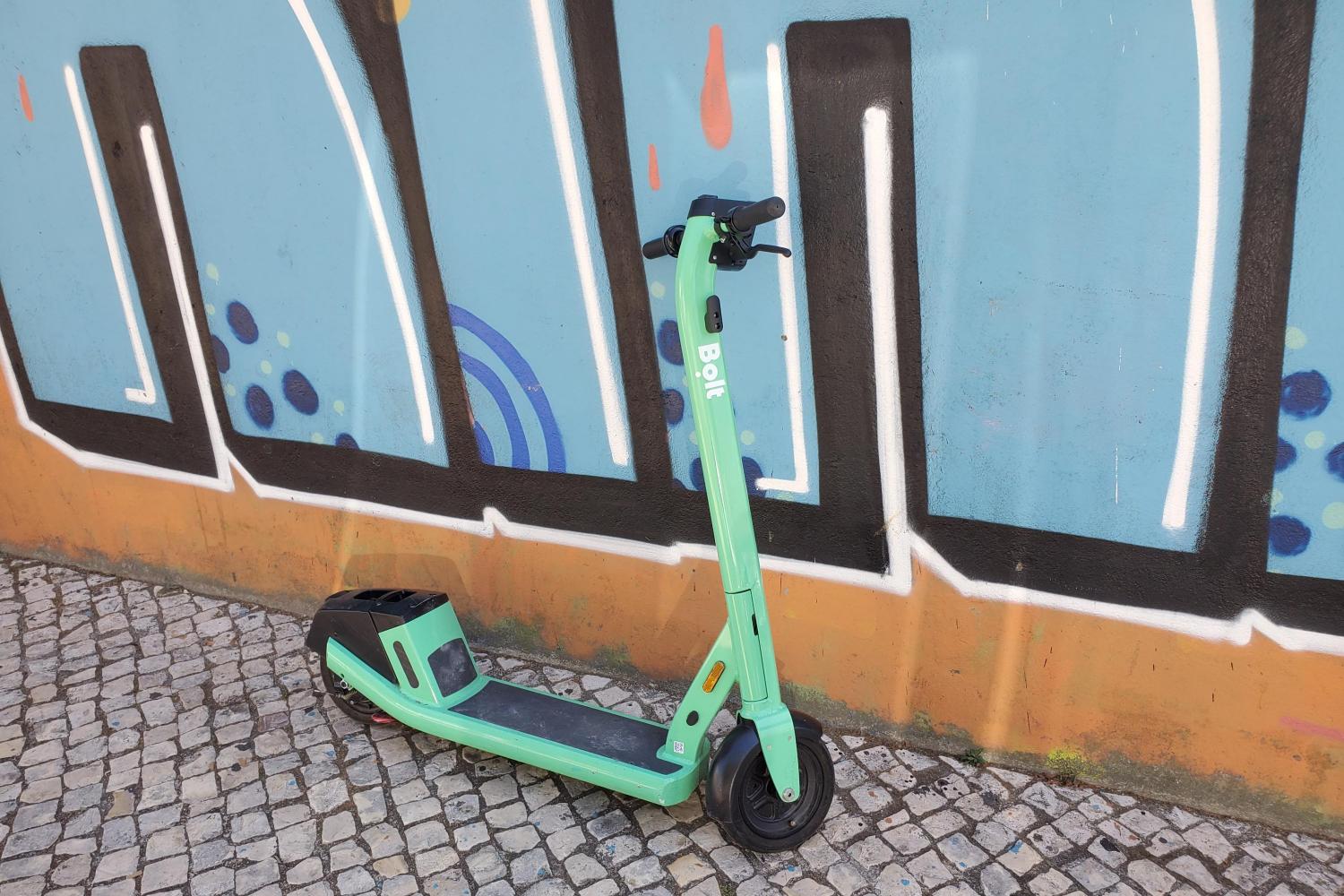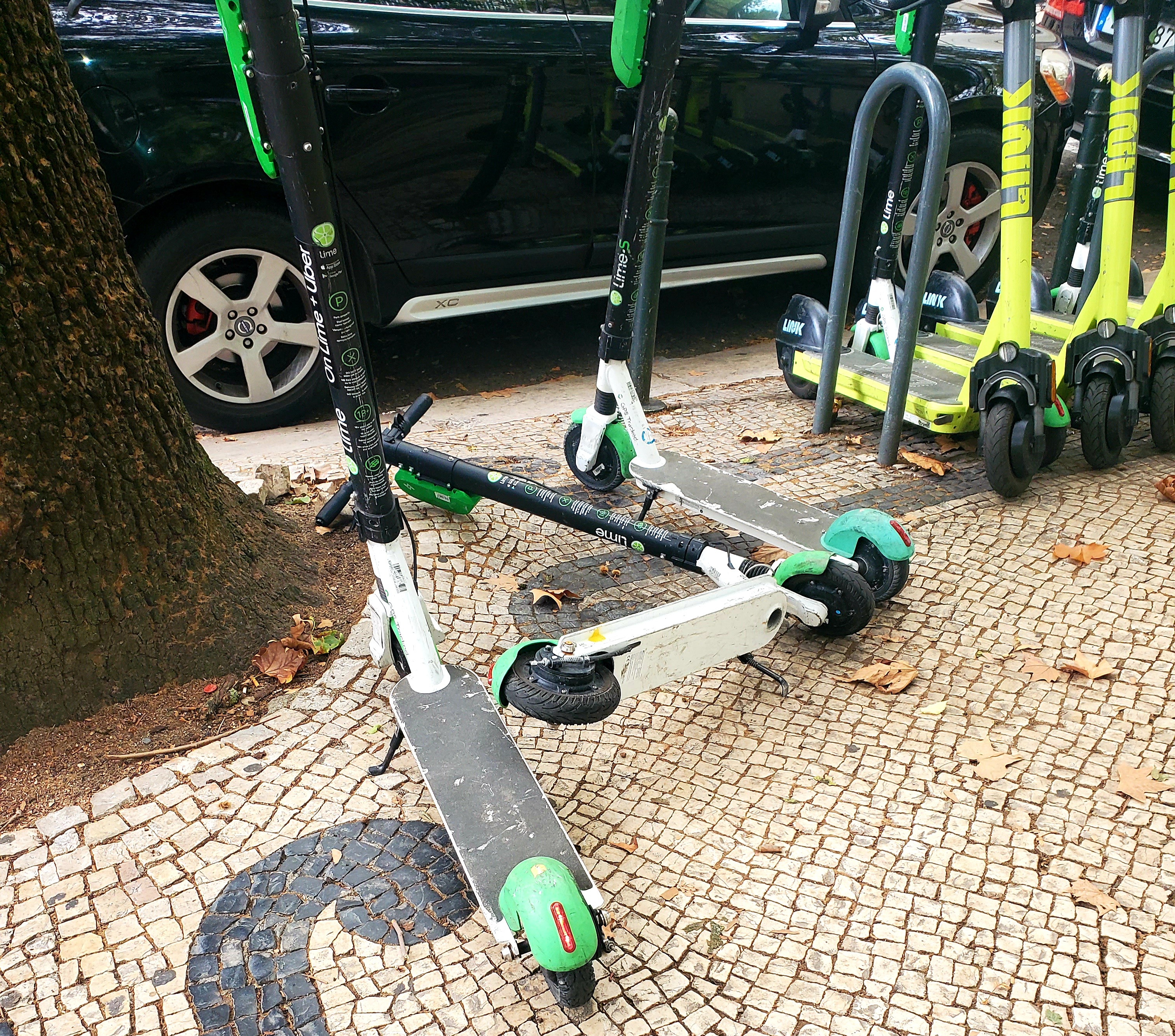
Steep hills, cobblestone streets, basalt-and-limestone paved sidewalks — not to mention rich food and pastries plus the free-flowing wine that would make anyone leery of riding anything with two wheels — the first impression traipsing about Lisbon is that micromobility would hardly be an option for getting around Portugal’s capital.
An introduction to micromobility in Lisbon
But the truth about micromobility options within Lisbon (and other cities in Portugal) is that electric scooters, bicycles (thanks to Gira) and e-bikes help make Lisbon not only a joy to explore but are a step forward for sustainable living, commuting and the notion of “smart cities.” The ease of hopping a scooter or bike complements investments the city’s added investments in public transportation — not to mention that ridesharing companies like Uber and Bolt make hailing an electric car in Lisbon and Porto as convenient as booking a diesel- or gasoline-fueled car.

Investments in upgrading the city’s infrastructure are among the many factors that have helped Lisbon rebound from the depths it hit during the 2008-2009 global financial crisis. Since then, the city has embarked on an aggressive transportation strategy, and results include grant after grant coming from the European Union, with funds earmarked for projects such as the city’s expanding subway system or modernizing its iconic tram network.
Included in this revival has been the arrival of scooters and bicycles across the city. The transition was not necessarily easy. As was the case of cities across the pond here in the U.S., Lisbon endured its share of scooter chaos, and the companies that provided such services in turn were paying a steady stream of fines as their wares were discarded across city sidewalks.
Your micromobility adventure: Here's where to start
Ground zero for experiencing Lisbon’s scooter culture is at Praça do Comércio, which itself symbolizes the city’s transformation. As recently as the 1980s the public square, which faces the Tagus River, was used as a parking lot. Nearby is a subway station and commuter rail station.
At first, the appearance of all these scooters could be cringeworthy to those who define micromobility as hailing a taxi. Yes, there are ample views of awkward visitors finding their balance on a scooter, a vision that makes any sight of your parents and grandparents slithering on a Segway tour appear as graceful swans.
But a trip aboard a scooter to explore more of Lisbon demonstrates how these services have become a vital part of the city’s transport system. TriplePundit tested out the system to reach some out-of-the-way venues and can vouch that despite the city’s terrain, micromobility in Lisbon certainly works, and works well.

Several companies offer scooters across this city of 540,000. The ones with the largest presence are Bird, Bolt, Lime and Link. Most charge similar fees: one euro or even less to unlock, and then anywhere from 10 to 25 cents a minute thereafter. At the time 3p was visiting, Bolt was taking an aggressive stance on pricing: Unlocking costs nothing, and the ride was about 10 cents a minute; some of our rides were further discounted. All offered some kind of promise that the more you rode, you more you saved.
If you’re visiting and are relying on your phone plan’s roaming option, that will affect which of these services could work for you. For us, Bolt turned out to be the easiest option. Link was somewhat of a challenge to scan and unlock; the same went for Lime. Bird, which appeared to have its scooters everywhere (and appeared to have the most sturdy ones at that), was a service we had no luck with unlocking — again, to be clear, hardly the fault of Bird as we were relying on our cheap-ass U.S.-based free yet clunky data roaming plan.
The fun — and occasional fright — started once we left Praça do Comércio and ventured to relatively far-off neighborhoods such as Belém or sites such as the Museu Nacional do Azulejo (the national tile museum — yes, there’s a such thing, and considering how important tiles are to Portugal’s aesthetic, it’s a must-visit).

Micromobility in Lisbon, as is the case with just about any city, is largely dependent on bike lanes. Compared to other European cities such as Amsterdam or Stockholm, or an ocean away in New York or Bogotá, Lisbon’s bike lane network is limited. Much of that can be attributed to its hilly terrain and the fact that despite the city’s redesign after the 1755 earthquake, many of its winding streets are great for post card shots, but not necessary for cycling. Depending on the source cited, scooting around on sidewalks is frowned upon in the least and worthy of a traffic violation at worst, but we saw plenty of locals zooming along cobblestone streets and Lisbon’s lovely Portuguese pavement-laden sidewalks. If you do decide to brave the cobblestone or tiled sidewalks, consider a mouth guard depending on your level of tolerance for your teeth chattering.
Achieving that last kilometer
Nevertheless, based on the number of workers we saw in suits — not to mention the plethora of skater bros (and some skater gals) — scooters and other mobility options have become a thing for locals, not only for those visiting with a passport. In fact, some of the scooter acrobatics were as breathtaking as they were goosebump-inducing. Bottom line: We found the scooters to be a cost-effective and timely method of transport, whether we scooted on bike lanes under the city’s 25 de April bridge (built by the same company that constructed the Golden Gate Bridge), that aforementioned museum, or completing errands out and about the Campo Pequeno neighborhood with a spin around that city’s bullring for good measure.
Not that scooters are always easy to hire and fire...
There is one caveat to the ease of exploring Lisbon by scooter: parking. Finding a place to bid adieu to a scooter was almost comical. While parking a Bolt or Link scooter proved to us to be a relatively seamless process, the same did not go for Lime — probably because we all know the howls of protest and disgust Lime generated here in the U.S. a few years back, where images of them strewn about sidewalks led some to be tossed into bodies of water.
It was clear Lime was extraordinarily cautious in averting any fines or nasty letters from local authorities. Parking near a subway station or bus stop, next to row of Link or Bolt scooters, was an unlucky proposition. Hilariously, parking a Lime scooter next to another Lime scooter, or two or five, also proved to be a frustrating task. To Lime’s credit, an exasperated email complaining about a ride’s charge generated by time wasted on parking more than moving from point A to B was answered with a full refund.

In fact, at one point, the frustration with parking led to an unfortunate event at a pharmacy, where we had to schedule a COVID-19 test to return home. Agitated at repeated failures to park the scooter, 3p decided to just park (we couldn’t pause) the scooter and pay by the minute with a side of constant glances to prevent a theft. That epically failed: The result was a young woman nabbing the scooter for a joyride into a cobblestone-laden alley which soon ended once that passage turned uphill. The outcome was a spat akin to a D-grade Charlie’s Angels scene, which included an awkward chase, shouts, curse words, evil laughs, an aborted face slap, pulled hair and a bloodied knee. The lesson learned is to park the scooter, try to interpret the app’s parking maps in the sunlight’s glare as best as possible, and never, ever leave your scooter unattended.
Other than that sad chapter, micromoblity absolutely works in Lisbon, as it should in any city located on flat land with even pavement. In fact, the scooters and bikes made the visit far better.
Images via Leon Kaye

Leon Kaye has written for 3p since 2010 and become executive editor in 2018. His previous work includes writing for the Guardian as well as other online and print publications. In addition, he's worked in sales executive roles within technology and financial research companies, as well as for a public relations firm, for which he consulted with one of the globe’s leading sustainability initiatives. Currently living in Central California, he’s traveled to 70-plus countries and has lived and worked in South Korea, the United Arab Emirates and Uruguay.
Leon’s an alum of Fresno State, the University of Maryland, Baltimore County and the University of Southern California's Marshall Business School. He enjoys traveling abroad as well as exploring California’s Central Coast and the Sierra Nevadas.














